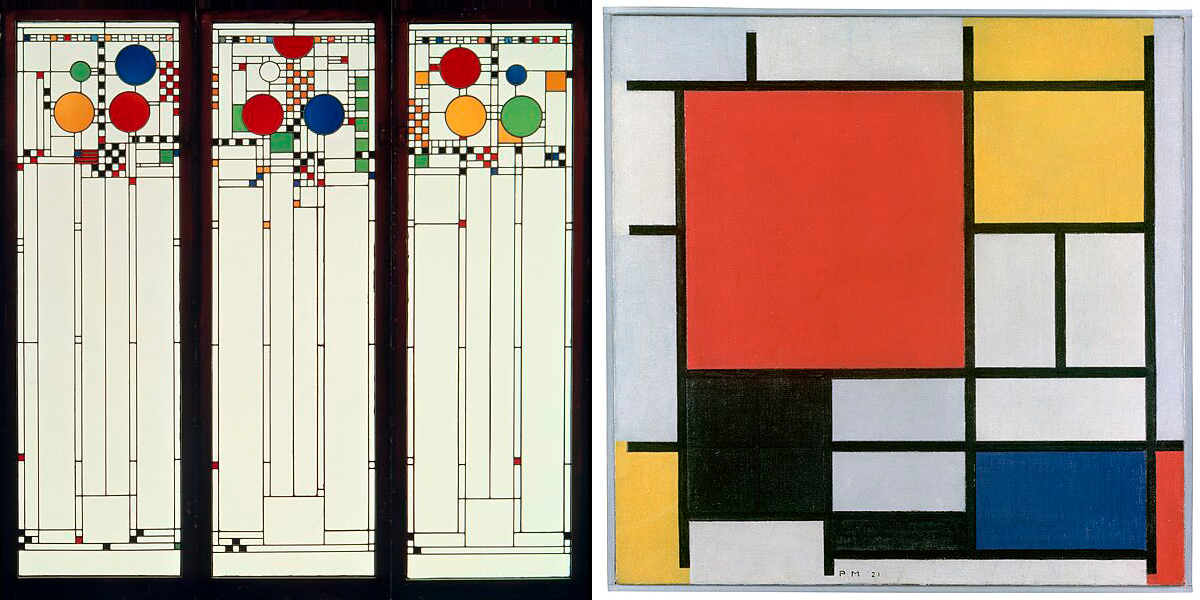beaux-arts
The sadness will last forever

Turbulent skies of Vincent Van Gogh’s “The Starry Night” align with a scientific theory, study finds
In 2017, Astrophysicist Trinh Xuan Thuan talked about his admiration for Vincent Van Gogh’s “The Starry Night,” revealing how the painter had intuited the colors of the stars long before science. [France Culture | audio in French]
The vision took place at night, yet the painting was created in several sessions during the day [MoMA, NYC]
the exiles that tended this garden under siege before you sought this refuge
a genius & his collaborator snuck into this raided sanctuary in the clearing
propped up a pulpit dug a moat in
call it the undercommons peddle snake oil from this perch
they promise flight , dreams of salvation to come
w/o nightmares w/o the rupture of night terror’sso long as u pledge yourself to refusal
they call it living other/wise,
‘Charlie Bit My Finger’ Is Leaving YouTube After $760,999 NFT Sale
Long believed by others to be a copy or the work of Leonardo’s studio, the “Salvator Mundi” was purchased in 2005 by a consortium of speculative art dealers for under $10,000. Eight years later, after the painting had been restored and declared the work of the Renaissance master, Bouvier bought it for $80 million after enlisting the help of a poker player to beat down the price.
The dealer swiftly sold it on for $127.5 million to his then-client, Dmitry Rybolovlev. […] And while Rybolovlev later auctioned off the painting for an astonishing $450 million in 2017, to a secret buyer now widely believed to be Saudi Arabia’s Crown Prince Mohammed bin Salman, he nonetheless alleges that Bouvier defrauded him — a claim Bouvier denies. […]
In the documentary, “The Savior for Sale,” an anonymous high-ranking French official claims that Prince bin Salman was adamant that the “Salvator Mundi” be displayed next to the “Mona Lisa” in order to solidify its place as an authentic Leonardo — despite ongoing questions about whether the work is entirely by the Italian master.
The French government ultimately decided not to exhibit the painting under the Saudis’ conditions, which the anonymous official says in the film “would be akin to laundering a piece that cost $450 million.”
If a crocodile steals a child and promises its return if the father can correctly guess exactly what the crocodile will do, how should the crocodile respond in the case that the father guesses that the child will not be returned?

Patrick Mimran (born 1956 in Paris, France) is a contemporary French multimedia artist, composer, and the former owner and CEO of Lamborghini. […] In 1987 he sold Lamborghini to Chrysler and made, so it is said, «enough profit to be completely satisfied».
{ Wikipedia | Hamlet Hamster }
still { Con Artist (2009), a documentary about Mark Kostabi — not Patrick Mimran }
‘If you want to make money in a casino, own one.’ –Steve Wynn
In 1997, David Bowie issued “bonds” that enabled their holders to earn a percentage of royalties from his back-catalog for the next ten years. An owner of a $1000 “Bowie Bond” would receive a 7.9% coupon each year. Prudential Insurance bought the first batch for $55 million.
At the outset, these securities seemed like a safe investment. Bowie’s songs were played regularly on the radio, and his albums were selling well, even decades after they were published.
Royalties from his work generated a steady income stream that was likely to continue. Bowie Bonds received a triple-A rating from Moodys, indicating they were as safe as U.S. government bonds.
But as online music sharing grew in popularity, Bowie’s album sales declined, and the bonds started to trade at a discount.
also { Supervising cryptoassets for anti-money laundering | PDF }
Caoutchouc statue woman reversible or lifesize tompeeptom of virgins nudities very lesbic the kiss five ten times

Mr. Wesselmann, who disliked the term Pop, chafed at being the only major artist of the Pop generation not honored with a museum retrospective in his lifetime. […]
“Wesselmann is a little bit under the radar for no good reason, because he certainly was one of the real innovators in the whole movement,” said Lucy Mitchell-Innes.
art { Tom Wesselmann, Smoker, 1 (Mouth, 12), 1967. Oil on canvas, in two parts. | Tom Wesselmann, Study for Great American Nude #90, 1966. Liquitex on paper. }
And how can an immaterial thing like a mind or soul, which does not have motion, put a body (the human body) into motion?

Artificial intelligence model detects asymptomatic Covid-19 infections through cellphone-recorded coughs
The researchers trained the model on tens of thousands of samples of coughs, as well as spoken words. When they fed the model new cough recordings, it accurately identified 98.5 percent of coughs from people who were confirmed to have Covid-19, including 100 percent of coughs from asymptomatics — who reported they did not have symptoms but had tested positive for the virus.
The team is working on incorporating the model into a user-friendly app, which if FDA-approved and adopted on a large scale could potentially be a free, convenient, noninvasive prescreening tool to identify people who are likely to be asymptomatic for Covid-19.
also { Detection of the SARS-CoV-2 spike protein in saliva with Shrinky-Dink© electrodes }
oil on canvas { Tom Wesselmann, Smoker #11, 1973 }
When a liar gets caught in a lie, they don’t come clean. They build a bigger lie.

signs of dishonesty decreased trust but only in those who had not previously built a good reputation as honest partners.
On the contrary, those who could establish a good reputation were trusted even when they were no longer trustworthy, suggesting that participants could not successfully track changes in trustworthiness of those with an established good reputation.
lithograph { Ellsworth Kelly, Blue Curve, 2013 }
‘It’s called the American Dream because you have to be asleep to believe it.’ –George Carlin

Is it possible to have a psychedelic experience from a placebo alone? […] We examined individual variation in placebo effects in a naturalistic environment resembling a typical psychedelic party. […] The 4-h study took place in a group setting with music, paintings, coloured lights, and visual projections. Participants (n=33) consumed a placebo that we described as a drug resembling psilocybin, which is found in psychedelic mushrooms. […]
There was considerable individual variation in the placebo effects; many participants reported no changes while others showed effects with magnitudes typically associated with moderate or high doses of psilocybin. In addition, the majority (61%) of participants verbally reported some effect of the drug. Several stated that they saw the paintings on the walls “move” or “reshape” themselves, others felt “heavy… as if gravity [had] a stronger hold”, and one had a “come down” before another “wave” hit her.
images { Left: Marilyn Buck | Right: Andy Warhol, Marilyn Monroe (Marilyn), 1967 }
Rock, get up, get down, miuzi weighs a ton

Enter Spotify, a platform that is definitely not the answer. In fact, it only exacerbates such conundrums. Yet for now it has manipulated the vast majority of music industry “players” into regarding it as a saving grace. As the world’s largest streaming music company, its network of paying subscribers has risen sharply in recent years, from five million paid subscribers in 2012 to more than sixty million in 2017. Indeed, the platform has now convinced a critical mass that paying $9.99 per month for access to thirty million songs is a solid, even virtuous idea. Every song in the world for less than your shitty airport meal. What could go wrong? […]
Indeed, Spotify’s obsession with mood and activity-based playlists has contributed to all music becoming more like Muzak, a brand that created, programmed, and licensed songs for retail stores throughout the twentieth century. In the 1930s, the company prioritized workplace soundtracks that were meant to heighten productivity, using research to evaluate what listeners responded to most. […]
Spotify playlists work to attract brands and advertisers of all types to the platform. […] We should call this what it is: the automation of selling out. Only it subtracts the part where artists get paid.
{ The Baffler (2017) | Continue reading | Thanks Tim }
The trick is, you use the truth when you wanna tell a lie
{ Thanks Thomas! }
the ffrinch that fire on the Bull that bang

Two programmer-musicians wrote every possible MIDI melody in existence to a hard drive, copyrighted the whole thing, and then released it all to the public in an attempt to stop musicians from getting sued. […]
Riehl and Rubin developed an algorithm that recorded every possible 8-note, 12-beat melody combo. This used the same basic tactic some hackers use to guess passwords: Churning through every possible combination of notes until none remained. Riehl says this algorithm works at a rate of 300,000 melodies per second.
Once a work is committed to a tangible format, it’s considered copyrighted. And in MIDI format, notes are just numbers.
“Under copyright law, numbers are facts, and under copyright law, facts either have thin copyright, almost no copyright, or no copyright at all,” Riehl explained in the talk. “So maybe if these numbers have existed since the beginning of time and we’re just plucking them out, maybe melodies are just math, which is just facts, which is not copyrightable.”
All of the melodies they’ve generated, as well as the code for the algorithm that generated them, are available as open-source materials on Github and the datasets are on Internet Archive.
This is the Hausman all paven and stoned, that cribbed the Cabin that never was owned that cocked his leg and hennad his Egg

Many New Yorkers are familiar with the iconic Waldorf Astoria, which sits on Park Avenue. But they might be surprised to learn that this is the second iteration of the luxury hotel. The original was located along Manhattan’s fashionable Fifth Avenue, and the structure took up the entire block between 33rd and 34th streets. But in late November 1929 — after the stock market had crashed and the slow slide into the Great Depression began — workers began demolishing it. […] The demolition of the old hotel, completed by the winter of 1930, made way for the construction of the ultimate expression of the city’s architectural ambitions: the Empire State Building.
The original hotel started as two hotels on Fifth Avenue built by feuding relatives. The first hotel, the 13-story, 450-room Waldorf Hotel, designed by Henry Janeway Hardenbergh in the German Renaissance style, was opened on March 13, 1893, at the corner of Fifth Avenue and 33rd Street, on the site where millionaire developer William Waldorf Astor had his mansion. […]
On November 1, 1897, John Jacob Astor IV opened the 17-story Astoria Hotel on an adjacent site, and leased it to Boldt. The hotels were initially built as two separate structures, but Boldt planned the Astoria so it could be connected to the Waldorf by an alley. Peacock Alley was constructed to connect the two buildings,[21] and the hotel subsequently became known as the “Waldorf-Astoria”, the largest hotel in the world at the time.
I’m in that black on black Porsche Panamera, in the back like “ooh wee”

Using Music as Medicine – finding the optimum music listening ‘dosage’
There was a general agreement of dosage time across 3 of the 4 domains with 11 minutes being the most common amount of time it took for people to receive the therapeutic benefit from their self- selected music preferences. The only exception was the domain of happiness where the most common length of time for people to become happier after listening to their chosen music was reduced to 5 minutes, suggesting that happy music takes less time to take effect than other music.
photo { Sarah Illenberger }














